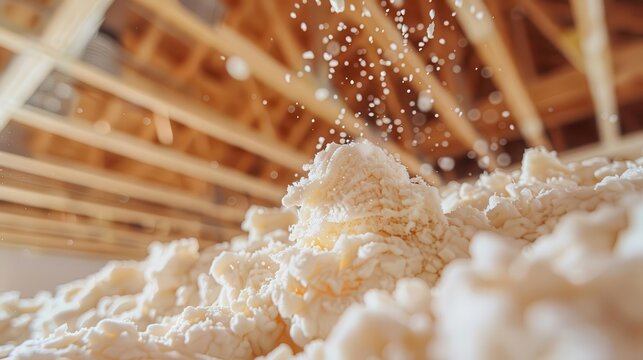Hydrophilicity is an important property that plays a key role in the chemical, physical, and biological behavior of molecules and materials. Hydrophilicity refers to the ability of a material to effectively interact with water molecules via hydrogen bonds or electrostatic forces.
The key factor determining a molecule’s hydrophilicity is the presence of certain functional groups in its structure. These groups are typically polar and contain highly electronegative atoms (such as oxygen and nitrogen) that can interact with water.
In this article, we review the types of hydrophilic and hydrophobic functional groups, the mechanisms of their interaction with water, their applications, and examples.
The role of hydrophilicity and functional groups
Hydrophilic molecules dissolve or swell easily in water because their functional groups are able to form hydrogen bonds or electrostatic attraction with water molecules.
Water molecules have a curved structure: hydrogen atoms carry partially positive charges, oxygen atoms partially negative charges. Polar functional groups are bound to these partial charges, which contribute to the stability of the solution.
The most important hydrophilic functional group
1. Hydroxyl (-OH)
-
Structure: An oxygen atom bonded to a hydrogen atom.
-
Properties: Due to the presence of electronegative oxygen, it can form strong hydrogen bonds with water.
-
Examples of substances: alcohol (ethanol), saccharide (cellulose), sugar (glucose).
-
Application: Increases the solubility of polymers, improves the adhesion of coatings and imparts wetting properties.
2. Carboxyl group (-COOH)
-
Structure: The carbon atom is doubly bonded to oxygen and hydroxy groups.
-
Properties: Weakly acidic, can lose protons in aqueous solution and acquire a negative charge.
-
Typical materials: organic acids (acetic acid, lactic acid), biopolymers such as polyglutamic acid.
-
Application: Ion exchange in resin, increasing the hydrophilicity of the polymer surface, adsorption of metal ions.
3. Amine (-NH₂)
-
Structure: A nitrogen atom bonded to two hydrogen atoms or an organic chain.
-
Properties: Basic; ability to accept protons and form hydrogen bonds with water.
-
Sample materials: amino acid (lysine), chitosan, polyethyleneimine.
-
Application: Surface modification of nanomaterials, increasing biocompatibility and adsorption of acidic pollutants.
4. Amide group (-CONH₂)
-
Structure: Carbonyl group bound to amino group.
-
Properties: Highly polar, can form double hydrogen bonds with water.
-
Materials such as: protein, polyacrylamide.
-
Application: Biogels, drug delivery materials, enzyme immobilizers.
5. Sulfonic acid group (–SO₃H)
-
Structure: One sulfur atom bonded to three oxygen atoms and one hydrogen atom.
-
Properties: A strong acid that is fully ionized in water, producing a strong negative charge.
-
Sample materials: polystyrenesulfonate, methanesulfonic acid.
-
Application: Strong ion exchange, fuel cell membranes , increased water absorption of polymers.
6. Phosphate group (–PO₄H₂)
-
Structure: Phosphorus is bonded to four oxygen atoms, one or two of which are bonded to hydrogen.
-
Properties: An acid that can form multiple hydrogen bonds.
-
Examples of substances: phospholipids, polyphosphates, DNA and RNA.
-
Application: Biological systems, bioactive materials, hydrophilic coatings.
7. Carbonyl (C=O)
-
Structure: Carbon and oxygen have a double bond.
-
Properties: Strong polarity, ability to form hydrogen bonds in water.
-
Typical materials: ketones, aldehydes, polyesters.
-
Application: Improves the colorability of polymers and increases the water absorption of the surface.
Mechanism of increasing hydrophilicity through functional groups
-
Hydrogen bonding : Polar groups form strong hydrogen bonds with water molecules.
-
Ionization : Some groups, such as -COOH and -SO₃H, ionize in water and generate an electrical charge, resulting in a strong attraction to water.
-
High polarity : The charge difference within the group leads to an increased interaction with polar molecules such as water.
Methods for adding functional groups to materials
-
Surface modification by plasma or chemical reactions.
-
Copolymerization : Molecules with hydrophilic groups combine to form a polymer structure.
-
Chemical bonding : grafting of chains with functional groups onto polymers.
Industrial and research applications
In medicine
-
Production of biogels for tissue engineering.
-
Improved biocompatibility of implants.
When purifying water
-
Production of ion exchange resins.
-
Removes heavy metals and dyes.
In the agricultural sector
-
Development of superabsorbent polymers to improve water retention in soil.
In the package
-
The hydrophilic coating reduces the adhesion of contaminants and improves transparency.
Problems and future research
Although the addition of hydrophilic functional groups offers numerous advantages, it can reduce the mechanical strength or thermal stability of the material . Further research focuses on optimizing the ratio of functional groups and developing hybrid materials that combine high hydrophilicity with favorable mechanical and chemical stability .
Finally
Functional groups such as hydroxyl, carboxyl, amine, amide, sulfonic acid, phosphate , and carbonyl play a key role in shaping materials and increasing their hydrophilicity. A better understanding of these groups and their interaction mechanisms with water will facilitate the design and manufacture of advanced materials for a wide range of applications. Thanks to advances in nanotechnology and surface chemistry, the intelligent use of these groups can pave the way for the development of high-performance and environmentally friendly materials.

